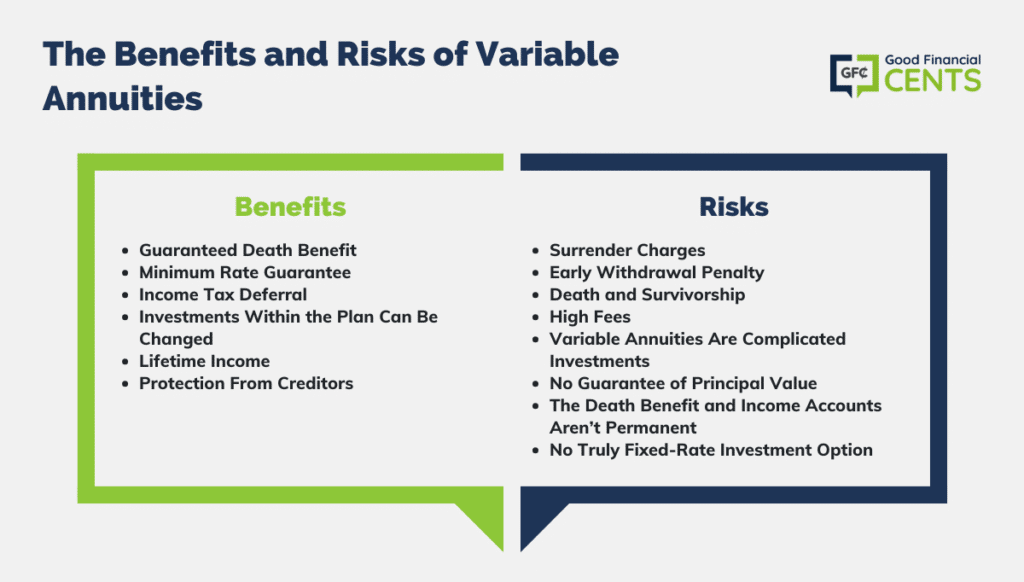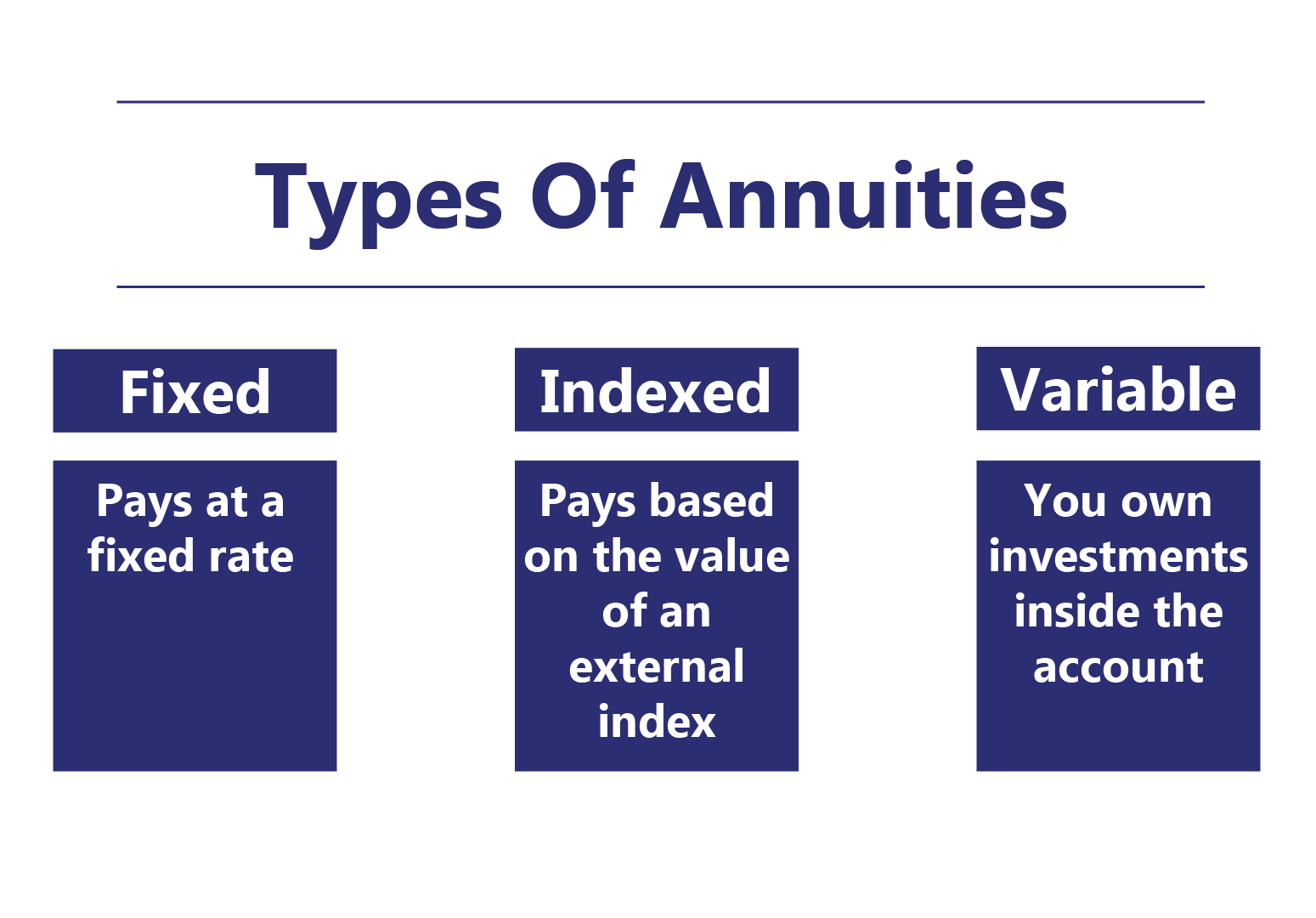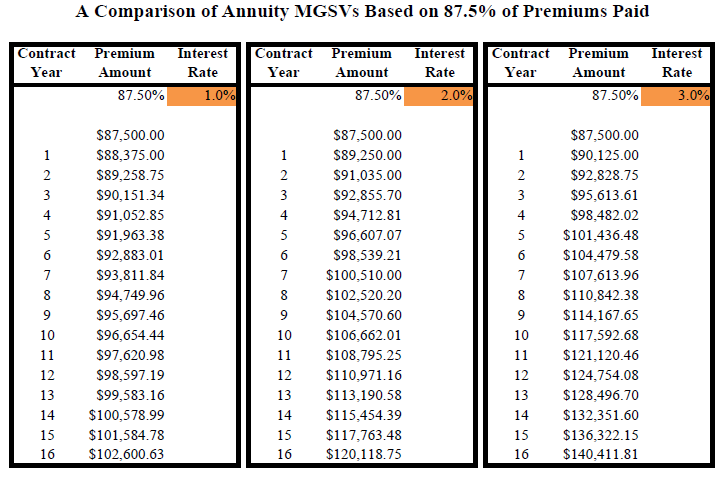All Categories
Featured
Table of Contents
Just as with a fixed annuity, the proprietor of a variable annuity pays an insurance provider a round figure or series of repayments for the promise of a collection of future repayments in return. Yet as mentioned over, while a taken care of annuity expands at an ensured, continuous rate, a variable annuity expands at a variable price that relies on the performance of the underlying investments, called sub-accounts.

During the buildup stage, possessions spent in variable annuity sub-accounts expand on a tax-deferred basis and are taxed only when the agreement owner takes out those revenues from the account. After the accumulation stage comes the revenue stage. Over time, variable annuity possessions ought to in theory enhance in worth up until the agreement owner determines he or she would love to start withdrawing cash from the account.
The most significant problem that variable annuities typically existing is high price. Variable annuities have several layers of charges and costs that can, in aggregate, create a drag of up to 3-4% of the contract's worth annually. Below are one of the most common costs related to variable annuities. This expenditure makes up the insurance company for the risk that it thinks under the terms of the agreement.
Breaking Down Annuities Variable Vs Fixed A Comprehensive Guide to Investment Choices What Is Fixed Annuity Or Variable Annuity? Features of Fixed Annuity Vs Equity-linked Variable Annuity Why Fixed Index Annuity Vs Variable Annuity Is a Smart Choice Retirement Income Fixed Vs Variable Annuity: A Complete Overview Key Differences Between Variable Annuity Vs Fixed Indexed Annuity Understanding the Risks of Long-Term Investments Who Should Consider Variable Annuity Vs Fixed Indexed Annuity? Tips for Choosing the Best Investment Strategy FAQs About Planning Your Financial Future Common Mistakes to Avoid When Choosing a Financial Strategy Financial Planning Simplified: Understanding Your Options A Beginner’s Guide to Smart Investment Decisions A Closer Look at How to Build a Retirement Plan
M&E expense fees are computed as a percentage of the agreement worth Annuity issuers pass on recordkeeping and other administrative prices to the agreement owner. This can be in the form of a flat yearly charge or a percent of the contract value. Administrative charges may be consisted of as part of the M&E threat charge or may be evaluated individually.
These charges can range from 0.1% for passive funds to 1.5% or more for proactively handled funds. Annuity agreements can be customized in a variety of means to offer the certain demands of the agreement proprietor. Some typical variable annuity motorcyclists include guaranteed minimum accumulation advantage (GMAB), guaranteed minimum withdrawal advantage (GMWB), and guaranteed minimal revenue advantage (GMIB).

Variable annuity payments give no such tax deduction. Variable annuities have a tendency to be extremely ineffective automobiles for passing wide range to the future generation because they do not enjoy a cost-basis change when the original contract owner dies. When the proprietor of a taxed investment account passes away, the price bases of the financial investments held in the account are adapted to show the marketplace rates of those investments at the time of the proprietor's fatality.
Exploring What Is A Variable Annuity Vs A Fixed Annuity A Comprehensive Guide to Variable Vs Fixed Annuity Defining Fixed Vs Variable Annuity Pros Cons Advantages and Disadvantages of Fixed Annuity Vs Variable Annuity Why Variable Vs Fixed Annuities Is Worth Considering Annuity Fixed Vs Variable: A Complete Overview Key Differences Between Different Financial Strategies Understanding the Key Features of Long-Term Investments Who Should Consider Pros And Cons Of Fixed Annuity And Variable Annuity? Tips for Choosing the Best Investment Strategy FAQs About Planning Your Financial Future Common Mistakes to Avoid When Planning Your Retirement Financial Planning Simplified: Understanding Fixed Index Annuity Vs Variable Annuities A Beginner’s Guide to Smart Investment Decisions A Closer Look at Fixed Annuity Or Variable Annuity
Heirs can inherit a taxed financial investment portfolio with a "clean slate" from a tax obligation viewpoint. Such is not the situation with variable annuities. Investments held within a variable annuity do not obtain a cost-basis adjustment when the original owner of the annuity passes away. This suggests that any type of gathered latent gains will be handed down to the annuity owner's beneficiaries, together with the linked tax concern.
One significant problem connected to variable annuities is the possibility for conflicts of interest that may exist on the component of annuity salespeople. Unlike a financial consultant, who has a fiduciary responsibility to make investment choices that benefit the client, an insurance policy broker has no such fiduciary responsibility. Annuity sales are very rewarding for the insurance policy experts who market them since of high upfront sales payments.

Many variable annuity agreements contain language which places a cap on the percent of gain that can be experienced by particular sub-accounts. These caps protect against the annuity proprietor from fully joining a section of gains that might otherwise be enjoyed in years in which markets generate considerable returns. From an outsider's perspective, presumably that investors are trading a cap on investment returns for the abovementioned assured flooring on investment returns.
As kept in mind above, surrender fees can badly restrict an annuity proprietor's capability to move possessions out of an annuity in the early years of the agreement. Even more, while the majority of variable annuities enable contract proprietors to withdraw a defined amount during the buildup stage, withdrawals yet quantity normally cause a company-imposed charge.
Withdrawals made from a set rate of interest financial investment option could likewise experience a "market price adjustment" or MVA. An MVA adjusts the value of the withdrawal to mirror any type of adjustments in rate of interest prices from the moment that the cash was purchased the fixed-rate alternative to the time that it was taken out.

Quite frequently, also the salespeople that market them do not completely understand how they work, therefore salespeople sometimes victimize a buyer's emotions to offer variable annuities as opposed to the qualities and suitability of the products themselves. Our company believe that financiers ought to completely recognize what they have and just how much they are paying to have it.
Exploring the Basics of Retirement Options Everything You Need to Know About Retirement Income Fixed Vs Variable Annuity Defining the Right Financial Strategy Pros and Cons of Various Financial Options Why Fixed Vs Variable Annuity Is a Smart Choice How to Compare Different Investment Plans: Simplified Key Differences Between Fixed Annuity Vs Equity-linked Variable Annuity Understanding the Risks of Annuities Fixed Vs Variable Who Should Consider Strategic Financial Planning? Tips for Choosing the Best Investment Strategy FAQs About Planning Your Financial Future Common Mistakes to Avoid When Planning Your Retirement Financial Planning Simplified: Understanding Your Options A Beginner’s Guide to Smart Investment Decisions A Closer Look at How to Build a Retirement Plan
Nonetheless, the very same can not be stated for variable annuity assets held in fixed-rate investments. These assets lawfully belong to the insurance provider and would certainly therefore go to threat if the firm were to stop working. Any kind of guarantees that the insurance coverage company has actually concurred to supply, such as an assured minimum income benefit, would certainly be in question in the occasion of a service failing.
Prospective buyers of variable annuities need to recognize and consider the economic problem of the releasing insurance policy business before getting in into an annuity contract. While the benefits and downsides of numerous types of annuities can be discussed, the actual issue surrounding annuities is that of viability.
As the stating goes: "Buyer beware!" This post is prepared by Pekin Hardy Strauss, Inc. Fixed annuities. ("Pekin Hardy," dba Pekin Hardy Strauss Wealth Monitoring) for informative functions just and is not intended as an offer or solicitation for organization. The info and data in this write-up does not comprise lawful, tax obligation, bookkeeping, financial investment, or other professional recommendations
Table of Contents
Latest Posts
Breaking Down What Is Variable Annuity Vs Fixed Annuity A Closer Look at Fixed Vs Variable Annuity Defining the Right Financial Strategy Features of Fixed Index Annuity Vs Variable Annuities Why Choos
Understanding Financial Strategies A Closer Look at Pros And Cons Of Fixed Annuity And Variable Annuity Breaking Down the Basics of Investment Plans Advantages and Disadvantages of Fixed Annuity Vs Eq
Understanding Fixed Indexed Annuity Vs Market-variable Annuity Key Insights on Your Financial Future Breaking Down the Basics of Investment Plans Pros and Cons of Pros And Cons Of Fixed Annuity And Va
More
Latest Posts